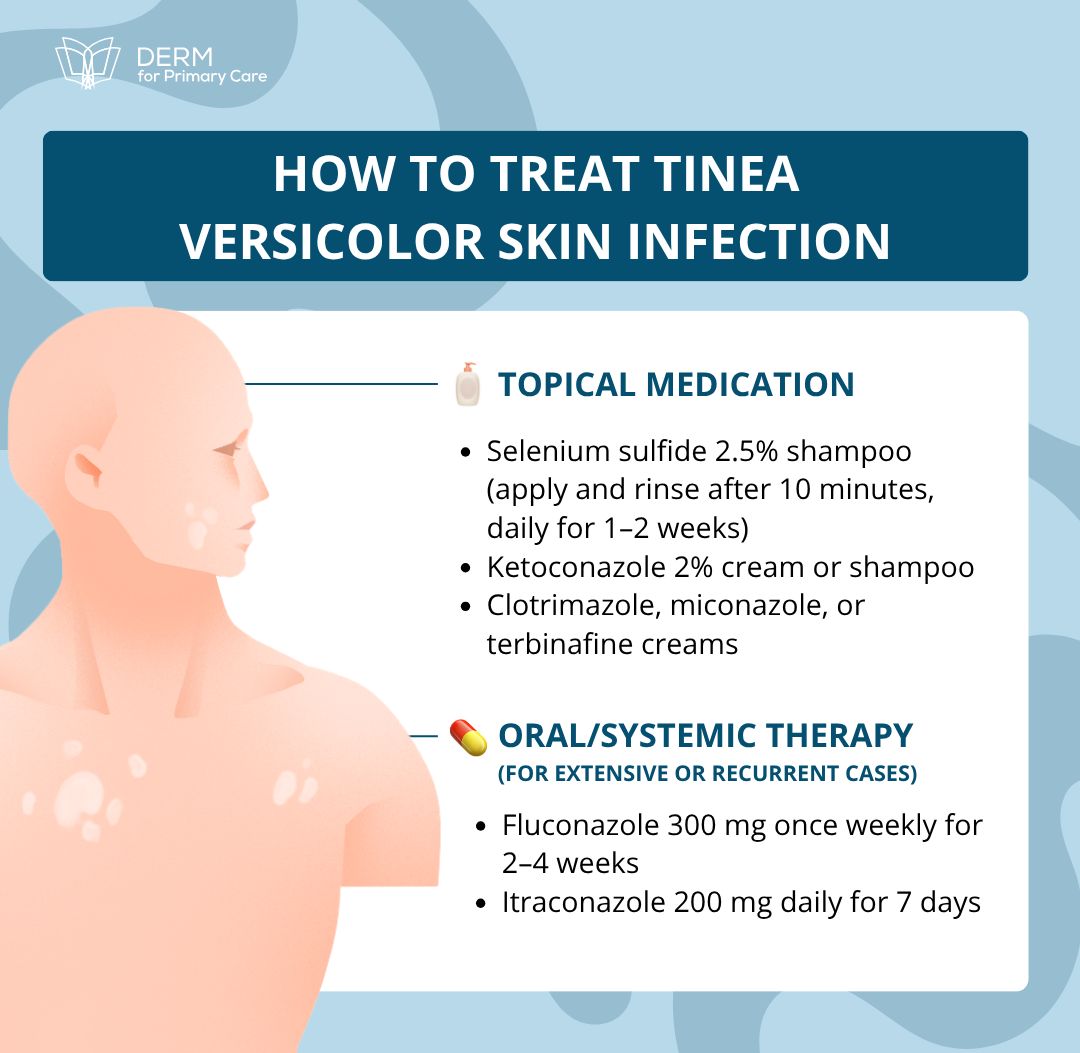- Beneath the Surface
- Posts
- Tinea versicolor: Diagnosis, Triggers & Targeted Treatment
Tinea versicolor: Diagnosis, Triggers & Targeted Treatment
Your Weekly Prompt to the Science of Skin and Success.Get your gloves: we’re going in.

Welcome back, DERM Community!
Last week, we confronted Necrotizing Fasciitis, a rapid, tissue-destroying infection that mimics cellulitis but demands surgical urgency and a sharp clinical eye.
Missed it? Our full breakdown + red flag checklist is still available to download here.
This week, we’re switching gears.
We’re looking at Tinea Versicolor, a common, benign fungal infection that patients often mistake for something more serious. It’s not about urgency but clarity: accurate diagnosis, targeted treatment, and simple patient reassurance.
Though it’s benign, misdiagnosis or improper treatment can lead to persistent discoloration and unnecessary distress for patients.
Featured on This Week’s Chapter:
Learning Opportunities: Tinea versicolor 101
Picture this.
You, on vacation. Paradise. The dream, right?
But then you notice some pale patches on your chest, on your back… They’re not itchy, but they won’t go away even when you tan.
You hate your new tan AND you’re worried something’s going on.
Can it be Tinea versicolor?
Let’s explore the disease and get to the diagnosis together.

Differential Diagnosis
When evaluating hypopigmented or hyperpigmented patches, consider a variety of conditions that mimic TV’s appearance:

To help you diagnose, we’ve created a FREE Tinea versicolor GUIDE you’ll wish you had sooner.
Download it now and stop second-guessing those tricky skin cases:
|
It is Tinea Versicolor… now what?
Management & Treatment Strategies:

Medications should never be prescribed without thorough diagnostic testing and an individual assessment of the patient’s condition.
Need more guidance on the treatment?
Think you know fungal infections? Think again.
Inside our course on Common Fungal Skin Infections, we go beyond the textbooks: covering Tinea versicolor and more, through the lens of real-life clinical practice. See what professionals actually look for when examining their patients.
👋🏻 See you next Thursday, DERM community!
Thanks for joining us on Beneath the Surface.
Though Tinea Versicolor isn’t dangerous, its clinical subtleties can be missed, and patients often feel frustrated by the discoloration. Recognizing it quickly and educating patients on its natural course is a powerful confidence builder.
If you found this issue helpful, share it with your team or residents.
If you found this issue helpful, share it with your team or residents.
Until next time.
Stay sharp, stay compassionate, and keep learning.
— The Derm for Primary Care Team



Reply